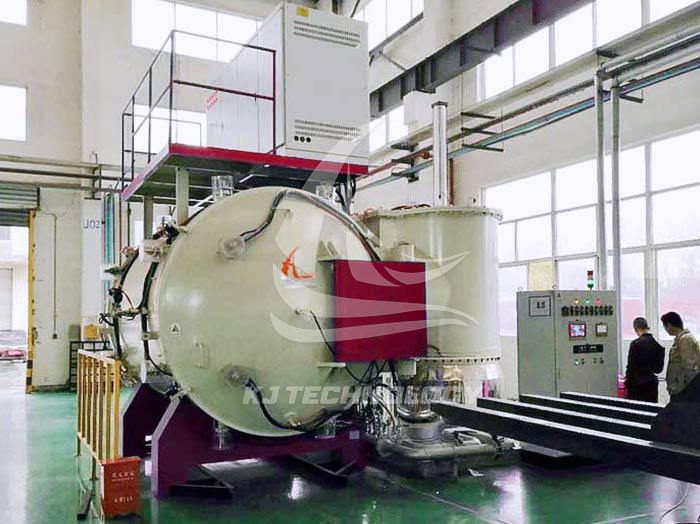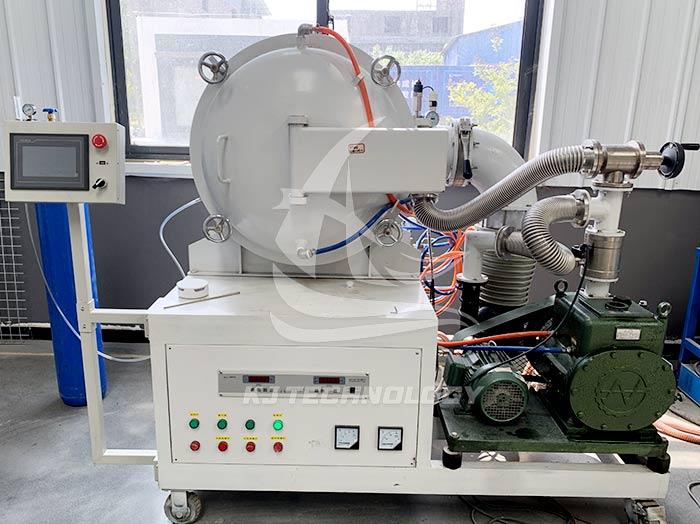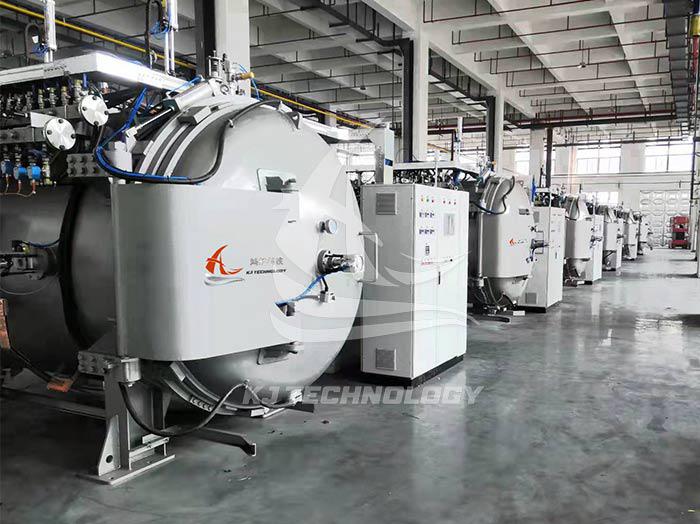Application fields of vacuum heat treatment atmosphere electric furnace
 06-30-2025 Author: KJ technology
06-30-2025 Author: KJ technology
The vacuum heat treatment atmosphere electric furnace combines the dual advantages of vacuum environment and controllable atmosphere, and can accurately control the oxidation, reduction or carburizing/nitrogen reactions on the material surface at high temperatures. It is widely used in fields that require strict material performance. The following is an analysis of its core application areas and specific scenarios:
1. Aerospace field
Heat treatment of superalloy
Application scenario: Key components such as aircraft engine turbine blades and combustion chambers need to withstand high temperatures above 1200 ℃ and complex stresses. Vacuum heat treatment is required to eliminate casting defects, refine grain size, and control surface oxide layer thickness (≤ 5 μ m).
Process advantages: Processing in vacuum or inert atmosphere (such as argon) to avoid high-temperature oxidation, while forming a dense aluminum oxide protective layer through processes such as aluminum infiltration and chromium infiltration to enhance thermal corrosion resistance.
Titanium alloy precision forming
Application scenario: Titanium alloy components such as aircraft landing gear and fasteners need to be vacuum annealed to eliminate processing stress and prevent hydrogen embrittlement.
Process advantage: The vacuum environment can effectively remove hydrogen adsorbed in titanium alloys (down to below 0.001%), avoiding hydrogen induced delayed fracture.
2. Automotive industry
Surface strengthening of mold steel
Application scenario: Automotive panel molds (such as car doors and engine hoods) need to be vacuum quenched and low-temperature tempered to obtain high hardness (HRC 58-62) and wear resistance, while controlling deformation (≤ 0.05mm).
Process advantage: carburizing in a nitrogen or methanol cracking atmosphere can achieve gradient control of carbon concentration on the mold surface, improving fatigue resistance.
New energy battery material processing
Application scenario: Lithium ion battery cathode materials (such as NCM, NCA) need to be sintered in vacuum or oxygen atmosphere to control grain size (1-5 μ m) and oxygen vacancy concentration, thereby improving electrochemical performance.
Process advantage: Vacuum environment can avoid the reaction between materials and CO ₂, H ₂ O in the air, and prevent the generation of impurity phases.
3. Semiconductor and Electronics Industry
Ceramic packaging substrate sintering
Application scenario: Aluminum nitride (AlN) or aluminum oxide (Al ₂ O3) substrates for high-power LED and IGBT modules need to be sintered in a vacuum or nitrogen atmosphere to control porosity (≤ 0.1%) and thermal conductivity (≥ 170 W/m · K).
Process advantages: The vacuum environment can eliminate adsorbed water in ceramics, avoid the formation of pores during sintering, and suppress abnormal grain growth through atmosphere regulation.
Deposition of metalized thin films
Application scenario: Aluminum foil used for capacitor electrodes needs to be annealed in a vacuum or hydrogen atmosphere to form a dense alumina dielectric layer (thickness ≤ 50nm) and improve the withstand voltage value (≥ 600V).
Process advantage: The atmosphere control can accurately adjust the oxidation rate, avoiding excessive oxidation that may cause breakdown of the dielectric layer.
4. Medical Devices and Biomaterials
Cobalt chromium alloy implant treatment
Application scenarios: Artificial joints, dental implants, etc. require vacuum heat treatment to eliminate casting defects and form a uniform oxide layer (thickness 2-5 μ m) on the surface to enhance biocompatibility.
Process advantages: Vacuum environment can prevent the oxidation and release of toxic ions from elements such as nickel and cobalt, while controlling the composition of the oxide layer through atmosphere regulation (such as Cr ₂ O ∝ accounting for ≥ 80%).
Shape memory alloy forming
Application scenario: Nickel titanium alloy for vascular stents needs to be annealed in a vacuum or argon atmosphere, with controlled phase transition temperature (Af point 30-40 ℃) to ensure that it returns to its preset shape at human body temperature.
Process advantage: Atmosphere protection can prevent the oxidation and volatilization of nickel elements, maintaining the stability of alloy composition.
5. In the field of new energy and environmental protection
Preparation of Fuel Cell Catalysts
Application scenario: Platinum carbon catalysts used in proton exchange membrane fuel cells (PEMFC) need to be reduced in a vacuum or hydrogen atmosphere to control platinum particle size (2-5nm) and dispersion (≥ 80%) and enhance catalytic activity.
Process advantage: The vacuum environment can prevent platinum from aggregating at high temperatures, while achieving controllable reduction through atmosphere regulation.
Materials for nuclear waste disposal containers
Application scenario: Austenitic stainless steel used for nuclear waste storage and transportation containers needs to be solution treated in a vacuum or argon atmosphere to eliminate welding stress and control intergranular corrosion tendency (ASTM A262 Practice E qualified).
Process advantage: Atmosphere protection can prevent stainless steel from sensitization at high temperatures and prevent chromium carbides from precipitating along grain boundaries.
6. High end tool and mold manufacturing
Processing of high-speed steel cutting tools
Application scenario: M42 high-speed steel for CNC cutting tools needs to be quenched and tempered multiple times in a vacuum or nitrogen atmosphere to obtain high red hardness (62) HRC@600 ℃) and anti chipping properties.
Process advantages: Atmosphere control can suppress surface decarburization during quenching (depth ≤ 0.02mm), while improving surface hardness (HV 1200-1500) through nitriding.
Hard alloy sintering
Application scenario: WC Co hard alloy for PCB drill bits needs to be liquid-phase sintered in vacuum or hydrogen atmosphere to control the uniformity of cobalt phase distribution (σ ≤ 5%) and improve bending strength (≥ 3000 MPa).
Process advantage: The vacuum environment can eliminate carbon loss during the sintering process and avoid the formation of the η phase (Co ∝ W ∝ C).
7. Research and development of new materials
Nanomaterial synthesis
Application scenarios: Graphene, carbon nanotubes, etc. require high-temperature annealing in vacuum or inert atmosphere to repair structural defects and improve conductivity (≥ 1000 S/cm).
Process advantages: Atmosphere control can avoid oxidation or agglomeration of nanomaterials at high temperatures, maintaining a high specific surface area (≥ 500 m ²/g).
Preparation of amorphous alloys
Application scenario: Iron based amorphous alloy strip needs to be rapidly cooled in vacuum or argon atmosphere (cooling rate ≥ 10 ⁶ K/s) to suppress crystallization and form amorphous structure.
Process advantage: Vacuum environment can avoid the reaction between molten metal and atmosphere, and enhance the ability to form amorphous materials.








